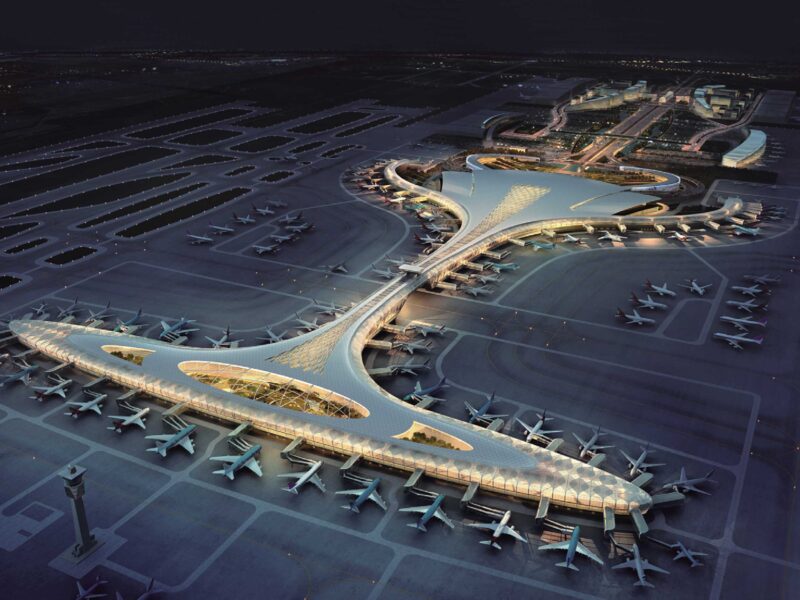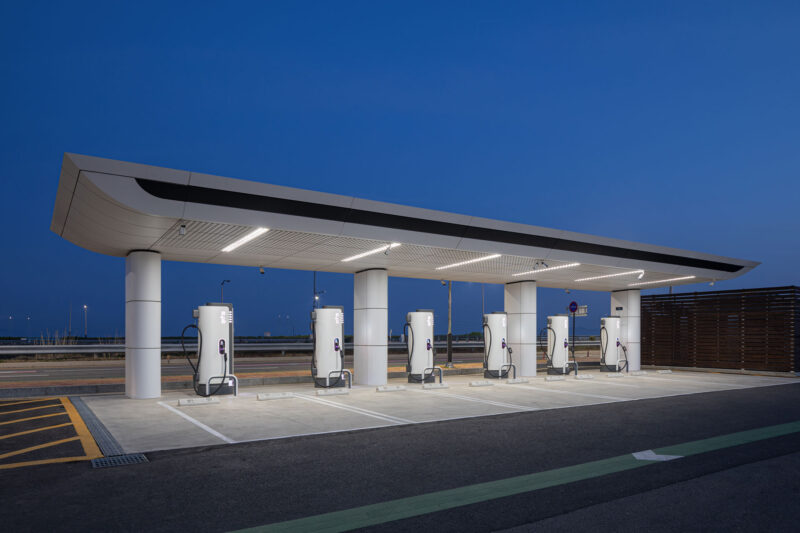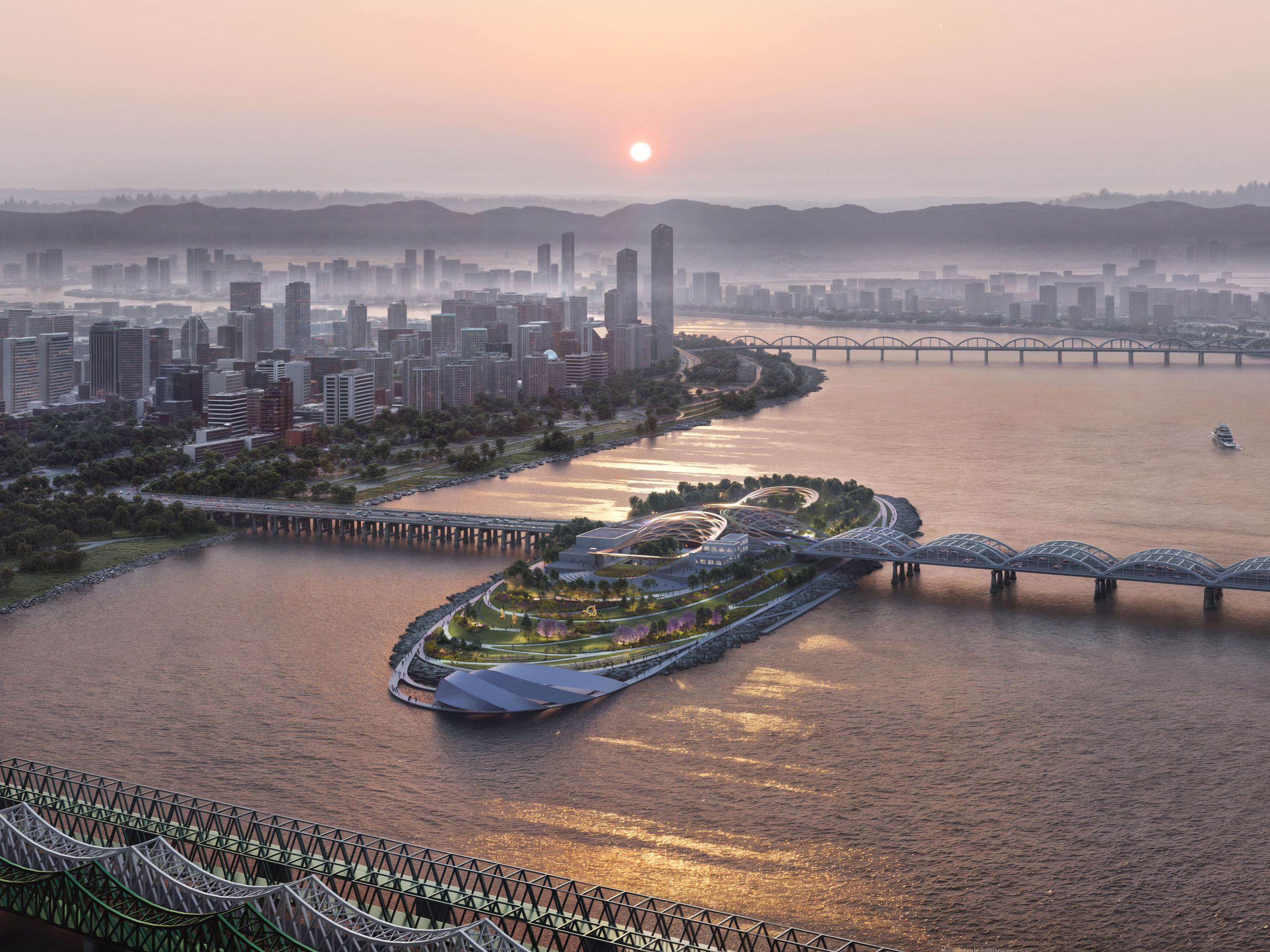
Situated in the middle of the Hangangdaegyo Bridge, Nodeulseom Island has been a site of various projects and usage plans since it was acquired by the Seoul Metropolitan Government in 2005 when its “Arts Island” plan was first conceived. In 2012, it was temporarily used as an urban farm garden. In 2019, it reopened as “Nodeul Dream Island,” positioning itself as a mixed cultural hub centered on music. In 2023, Seoul selected Nodeulseom as one of the pilot sites for the “Architectural and Urban Design Innovation Plan” and held an international nominated design competition based on six foundational initiatives. Junglim Architecture collaborated with Denmark-based firm BIG to participate in the competition. Our design aimed to rethink the island’s infrastructure, enabling it to be reborn as a lighthouse of Seoul beyond the riverbank, awakening the island’s potential that had been blocked by highway divides, cramped programming, and periodic flooding.
From the elevated platform, the noise of the highway fades away. Shading, rain screens, and canopies extend in all directions from the redefined center of the island at the highway intersection. Adapted to the island’s environment, these structures become media walls, accommodate performance halls and cafes, and naturally connect existing buildings. This forms a silhouette reminiscent of a bird landing on the island. Walking paths split and merge, weaving outdoor spaces rich in biodiversity, while architecture and landscaping harmonize to bridge divisions. Within this floating island, people discover hidden gems and experience enchanting moments against the backdrop of daily sunsets. Nodeulseom will serve as a cultural terminus where architecture anchors itself and interacts with the world, and as an experiential landscape that revives biodiversity against floods and environmental pollution, offering inspiration for the future.

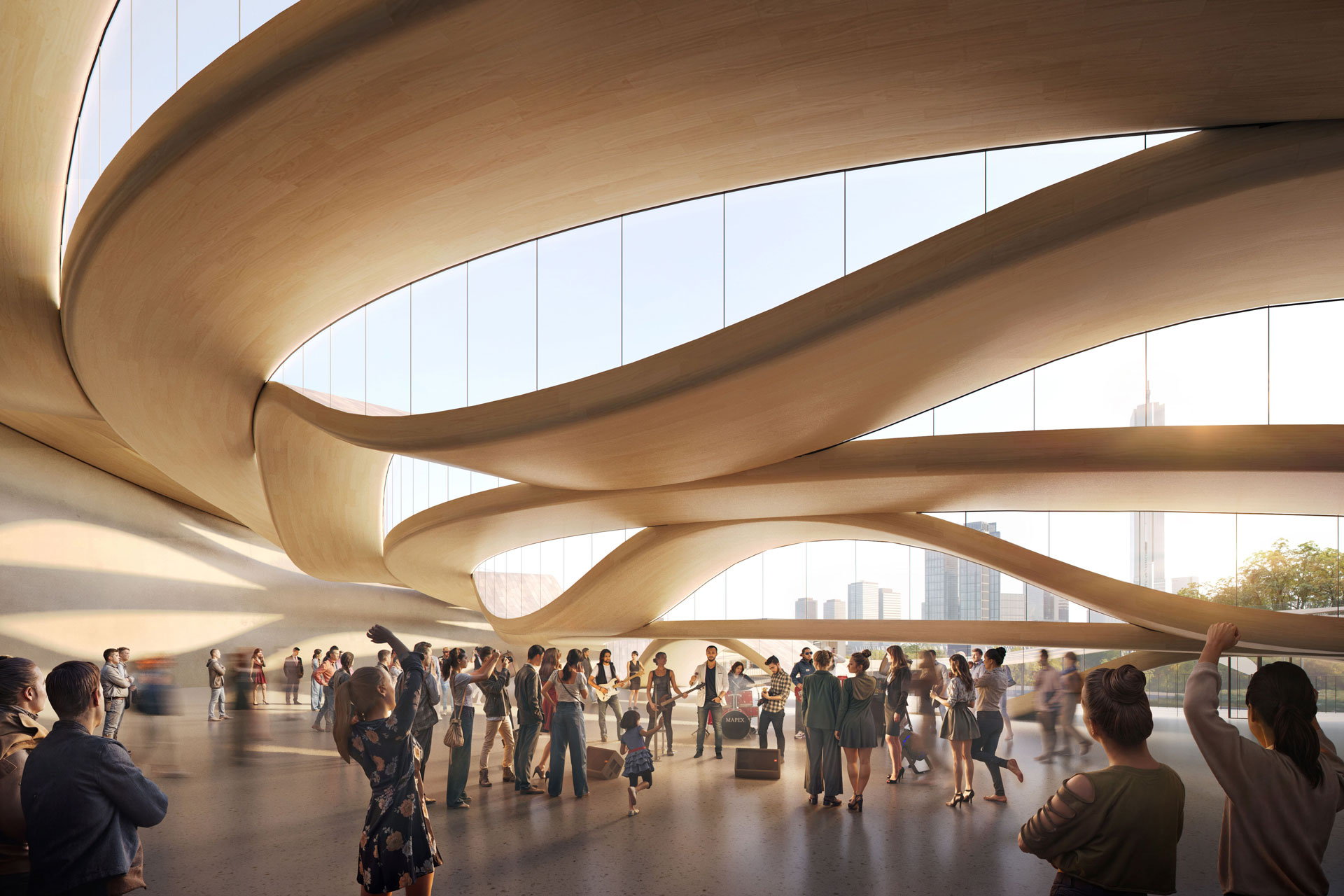

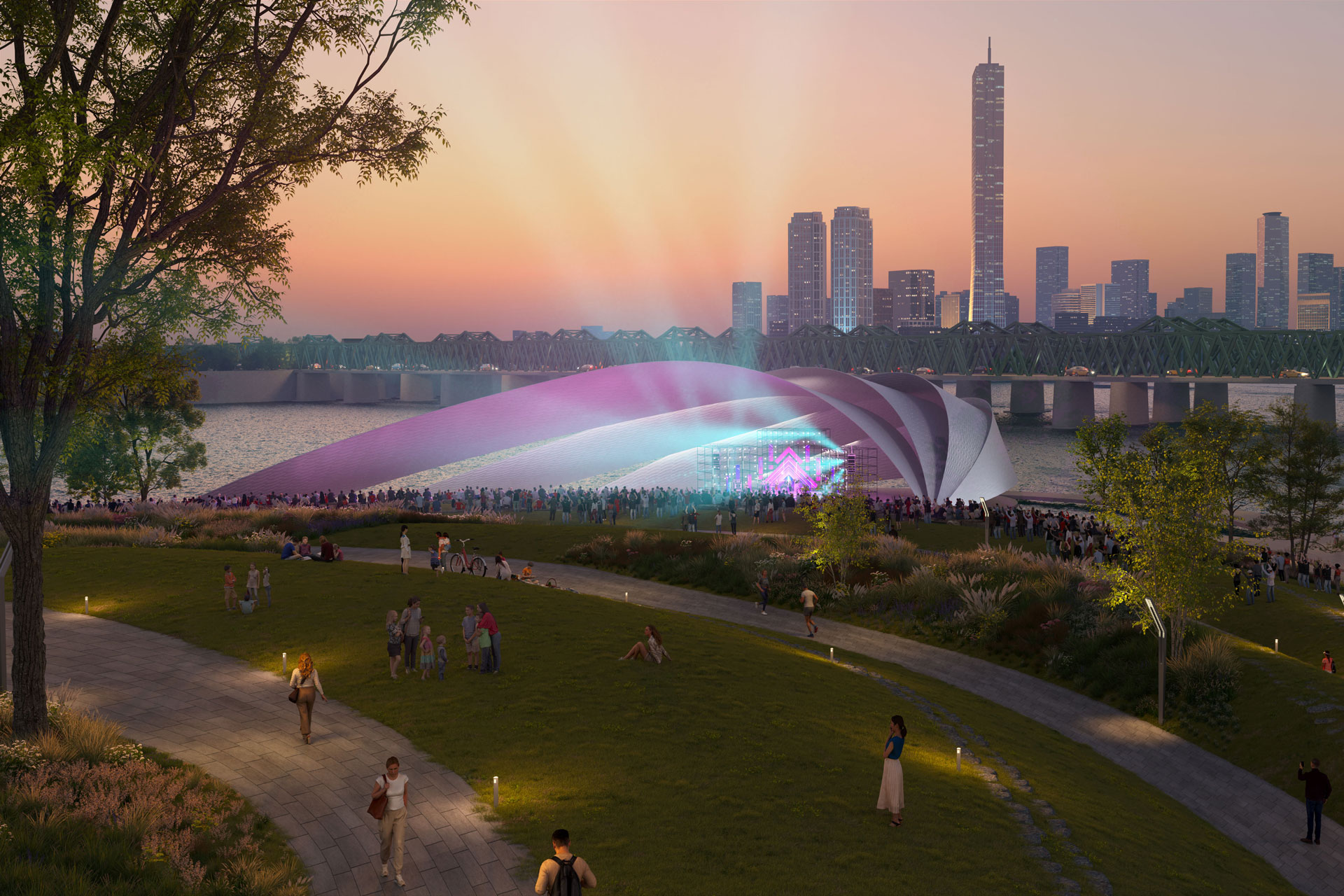
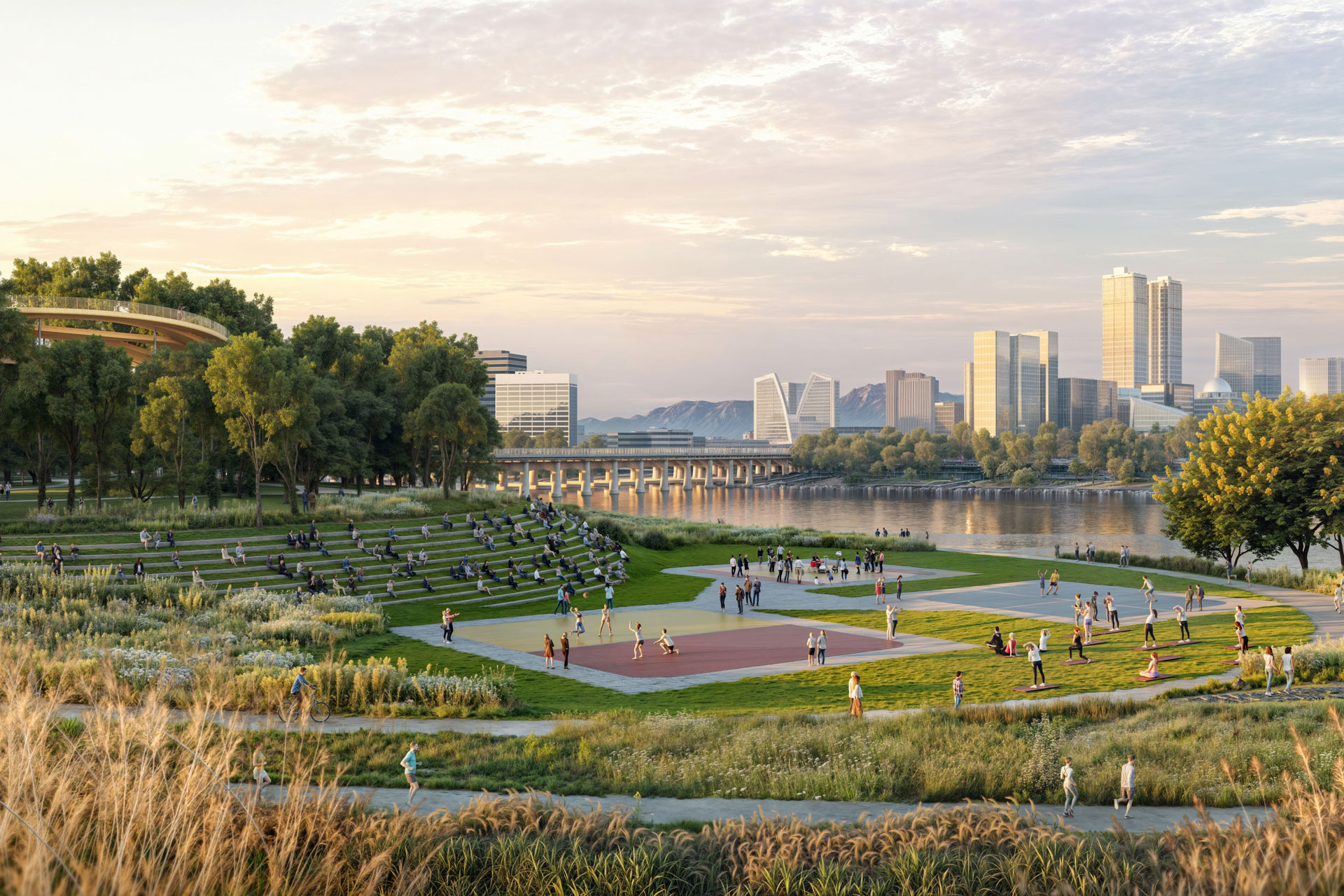


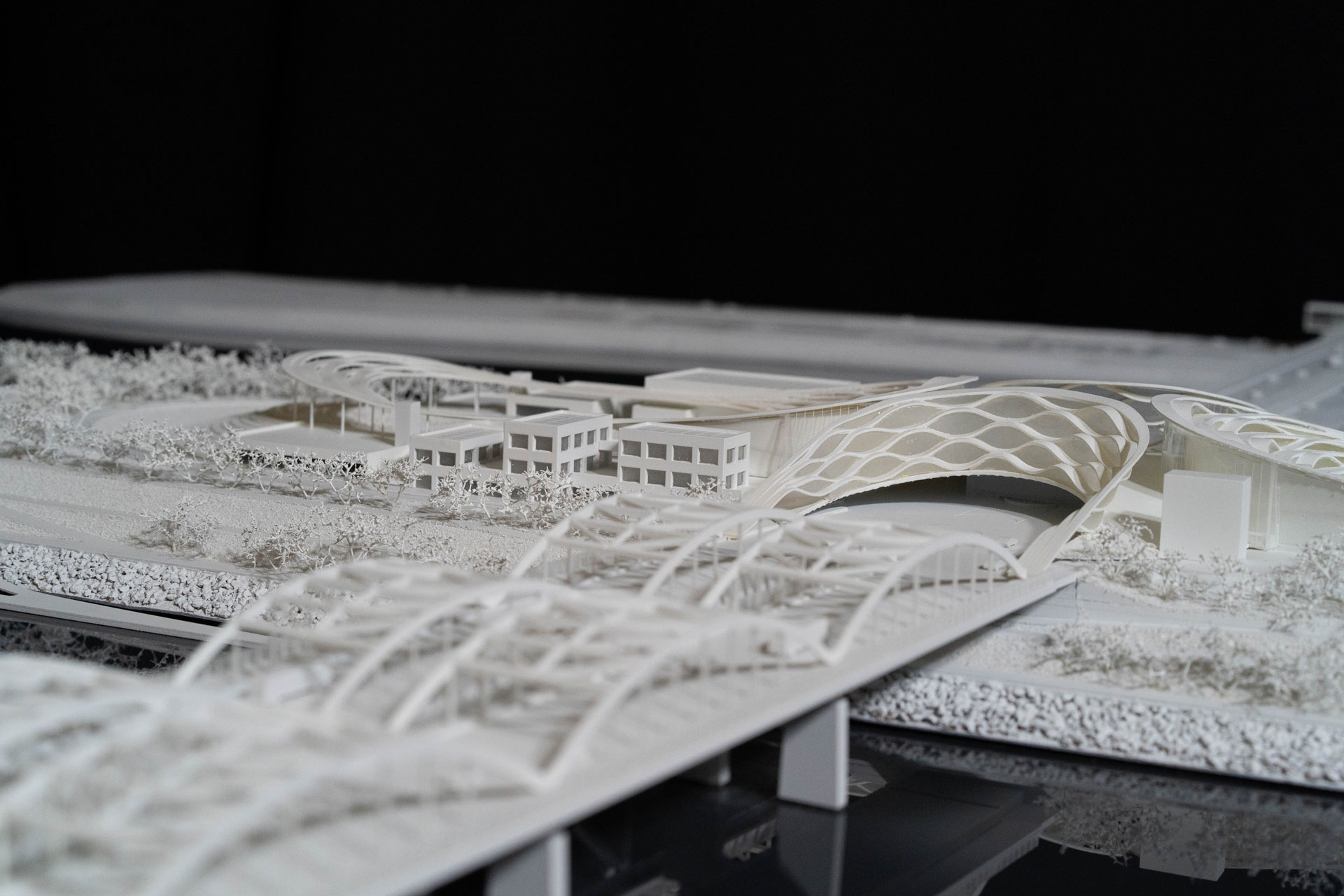
-
Status
Unrealized
-
Client
Seoul Metropolitan Government
-
Program
Public, Cultural
-
Design Year
2024
-
Location
Yongsan-gu, Seoul
-
Gross Floor Area
10,626.17m2
-
Building Area
10,637.90m2
-
Number of Levels
3F
-
Design
-
Partner
BIG(Bjarke Ingels Group)
-
Photo
© BIG
Situated in the middle of the Hangangdaegyo Bridge, Nodeulseom Island has been a site of various projects and usage plans since it was acquired by the Seoul Metropolitan Government in 2005 when its “Arts Island” plan was first conceived. In 2012, it was temporarily used as an urban farm garden. In 2019, it reopened as “Nodeul Dream Island,” positioning itself as a mixed cultural hub centered on music. In 2023, Seoul selected Nodeulseom as one of the pilot sites for the “Architectural and Urban Design Innovation Plan” and held an international nominated design competition based on six foundational initiatives. Junglim Architecture collaborated with Denmark-based firm BIG to participate in the competition. Our design aimed to rethink the island’s infrastructure, enabling it to be reborn as a lighthouse of Seoul beyond the riverbank, awakening the island’s potential that had been blocked by highway divides, cramped programming, and periodic flooding.
From the elevated platform, the noise of the highway fades away. Shading, rain screens, and canopies extend in all directions from the redefined center of the island at the highway intersection. Adapted to the island’s environment, these structures become media walls, accommodate performance halls and cafes, and naturally connect existing buildings. This forms a silhouette reminiscent of a bird landing on the island. Walking paths split and merge, weaving outdoor spaces rich in biodiversity, while architecture and landscaping harmonize to bridge divisions. Within this floating island, people discover hidden gems and experience enchanting moments against the backdrop of daily sunsets. Nodeulseom will serve as a cultural terminus where architecture anchors itself and interacts with the world, and as an experiential landscape that revives biodiversity against floods and environmental pollution, offering inspiration for the future.










